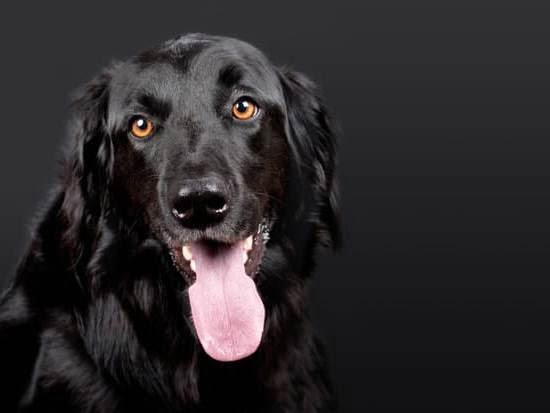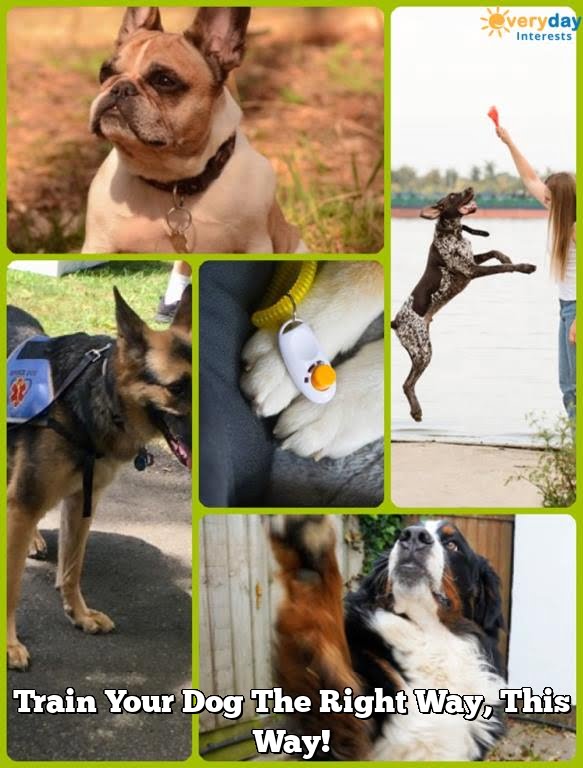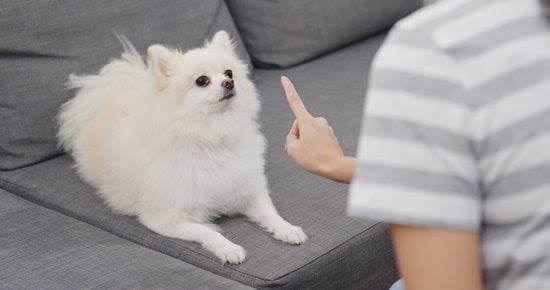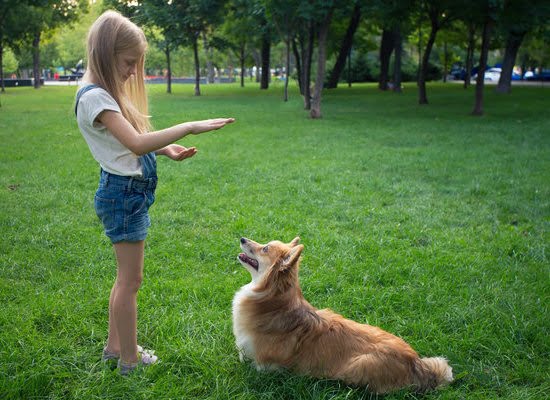Introduction
Training a dog is one of the most fun and rewarding activities that you can do with your beloved pet. Not only does it give your pup valuable skills, it also strengthens the bond between you and your new family member. The easiest way to train a dog is by using positive reinforcement techniques.
Positive Reinforcement for Training: Positive reinforcement involves making training enjoyable for both of you; it promotes good behavior by rewarding desired actions with treats, praises, or toys. This technique is effective because it encourages your dog to engage in behaviors they enjoy while helping them learn which behaviors you want more of. For example, if your pup knows he gets a treat after sitting nicely when asked, he will be motivated to perform the action again – being intentional about rewarding desired behaviors is key. Additionally, positive reinforcement eliminates fear and repetitiveness associated with conventional methods of discipline like scolding or punishing bad behavior. This makes learning a more pleasant experience for both you and your pup!
Extended Exercise: Once you’ve got the basics down, extended exercise helps reinforce positive behavior and builds upon the skills that have been learned so far. Try taking an afternoon walk together once or twice a week or enrolling in an obedience class – exercising regularly will help keep your pup mentally stimulated and even-tempered. Remember that consistency is important when teaching new commands as this increases their learning potential; aim for several repetition sessions every day where possible!
FinalWord: Training a dog takes time and patience but can be made easier with proper preparationand knowledge of how to use positive reinforcement techniques properly! When done correctly, teaching tricks and basic commands with love and support can result in immense satisfaction both for you and your furry friend!
Identify Your Dog’s Learning Style
Identifying your dog’s learning style is key to training them in the easiest way possible. Every dog has different strengths, weaknesses, and preferences when it comes to picking up learning cues from their trainer. Some dogs are more sensitive and require a slower-paced approach with plenty of rewards for small successes. Others are more independent, so they will need you to be clear and consistent in your commands while giving them plenty of opportunity to practice what they’re learning on their own. Still other dogs may prefer a combination of both approaches and may benefit from highly structured routines or activities that provide positive reinforcement when done correctly. Knowing your dog’s individual habits and preferences can help you create a training plan that is tailored specifically for them, making sure both you and your pup have an enjoyable experience each time you come together for an educational session.
Establish Necessary Prerequisites Before Training
Before you begin the training process, it is important to make sure all the necessary prerequisites are in place. Start by ensuring that your dog is healthy and up-to-date on vaccinations. Make sure your pup is comfortable by providing plenty of food, water and potty breaks. You will also want to choose a location free from distractions where you can focus solely on training. If possible, avoid areas where other animals may be present as they could prevent your pup’s focus away from training. Offer lots of praise and rewards during training sessions, as this helps reinforce good behavior. Be patient with your pet, as learning new behaviors can take time and repetition. Remember to remain consistent with commands and treat expectations while keeping each session short and sweet in order to keep Fido engaged throughout the entire process. Doing these things will make it easier for both you and your pup throughout the whole dog-training experience!
Set Clear Training Guidelines and Expectations
It is important to set clear training guidelines and expectations for your dog when beginning a training program. Be sure you explain what behaviors you expect from them clearly, calmly and repeatedly. Give simple instructions that are easy for them to understand such as “sit” or “lie down”. When they complete the behaviors correctly, provide praise or a reward in the form of treats, verbal acknowledgement or affection. In order to make sure that your pup continues to recognize your commands, practice these commands consistently throughout the week until they are mastered. Additionally, always remain patient with your pup as even the most advanced dogs need time and repetition when learning new commands and behaviors. Over time, you will be able to use a combination of punishment (for unacceptable behavior), rewards (for acceptable behavior) and patience to train your pup into a well mannered dog.
Use the Right Training Tone and Language
When training a dog, it is important to use the right tone and language. Speak to your dog in an authoritative, but gentle voice. Let them know you are in charge with commands like “sit” or “stay” using simple words they understand. Using the same language over time helps build a structure that allows your pup to abide by rules more efficiently. In addition, be sure to give praise when your pup does something right and treat them with a reward each time they obey. This will reinforce good behavior and help establish trust between you and your pet. Try offering special treats or playtime as rewards for following commands or sitting still in certain situations. The rewards system is an effective way to train your pup while nurturing their love of learning new skills. Dogs need consistency and repetition—so keep practice sessions short but regular, maintain an upbeat attitude when interacting with your pet, and stay positive!
Implement Appropriate Rewards and Praise
When it comes to training a dog, it’s best to use appropriate rewards and praise. Consistency is key when giving rewards, as well as timing and providing an appropriate reward immediately after your pup does something correctly. When it comes to rewards, treats are easy and effective. However, depending on the breed and personality of the pup, some may respond better to verbal praise or minor physical affection such pats or rubs. Dogs are eager learners so make sure to be patient and consistent with your instruction. Additionally, try to keep the sessions short but fun, with plenty of breaks in between so that they can take their rewards without feeling overwhelmed or tired. Banks treats and praises will go a long way in teaching your pup desired behaviors while boosting their confidence at the same time!
Utilize Various Training Techniques to Suit Your Dog’s Needs
When training your dog, it is important to understand what specific techniques work best for your pup. Depending on the age, breed, and personality of your dog, some methods may be better than others. Positive reinforcement is often a great place to start as it reinforces desired behaviors by providing rewards or praise when they obey commands. This could take the form of treats, verbal praise, body rubs and more. Other popular methods are clicker training and using positive punishment (though considered controversial). Clicker training involves giving your dog a unique sound with a reward after successful completion of a task. With positive punishment, an undesirable behavior is corrected by introducing something the pup does not like such as making a loud noise or temporarily taking away their favorite toy. To supplement these techniques you can also use basic obedience tools such as puppy playpens and long leads so you can keep your pup safe and better control their environment during training sessions. Though there is no one-size-fits-all method to train a dog, figuring out which techniques work best for your pup is key in teaching them good habits efficiently.
Monitor Your Dog’s Progress Often
The easiest way to train a dog is to be consistent and monitor their progress often. This means determining what you want them to learn and committing to it. For example, teach your dog basic commands like ‘sit’, ‘stay’ and ‘come’ and get them familiar with these by using positive reinforcement techniques such as reward-based training. When training your dog, make sure you don’t get discouraged if something doesn’t work – just persist with rewarding good behavior and eventually your dog will grow out of bad habits. Be patient and kind but also firm and consistent with your expectations. To ensure consistent practice, consider enrolling in obedience classes or canine sports to help keep your pup sharp on their commands. Make sure you take time in between each teaching session so that your pup has an opportunity to reinforce the lesson learned from before – consistency is key for successful training.
Consistency and Patience Go a Long Way
The easiest way to train a dog is to use a consistent, positive approach. Regular and frequent training sessions will help your pup learn quickly and efficiently. Be sure to reward desired behavior with treats or verbal praise so the pup knows when it has done something correctly. Keep instructions short and simple, avoid yelling or punishing the animal, and never try to force the pup into any situation it is not comfortable with.
Consistency means that you need to stick to a particular training routine until the desired behaviors become second nature for your pet. That means repeating commands often, as repetition is key for successful training. Working with your pup even over short periods of time each day will make progress much quicker than infrequent lengthy sessions. As you move along in your lessons, introduce new tasks using the same techniques and protocols – keep it familiar for your friend!
Patience is also incredibly important when training a dog. Dogs can take some time to learn new tricks; be prepared for setbacks or slow progress along the way – this isn’t anything out of the ordinary during the learning process. Have patience with yourself too, as you develop proper training techniques that are best tailored to your pet’s individual needs. And if things ever get overwhelming, remember that taking breaks together can be bonding experiences too!
Wrap Up
Training your dog is perhaps the most important step in gaining a well-behaved, healthy canine companion. The simplest way to train a dog is through positive reinforcement. Using treats, praise, and rewards for desired behavior can make learning new behaviors much easier for your pup. Additionally, having consistent training sessions with your dog every day and keeping them short will ensure that your pup is focused and motivated to learn. Finally having patience and remaining consistent will ensure that your pup learns efficiently and quickly. Training your dog doesn’t have to be hard or complicated – following these simple tips can help you achieve the happy, trained pet you want in no time.

Welcome to the blog! I am a professional dog trainer and have been working with dogs for many years. In this blog, I will be discussing various topics related to dog training, including tips, tricks, and advice. I hope you find this information helpful and informative. Thanks for reading!





